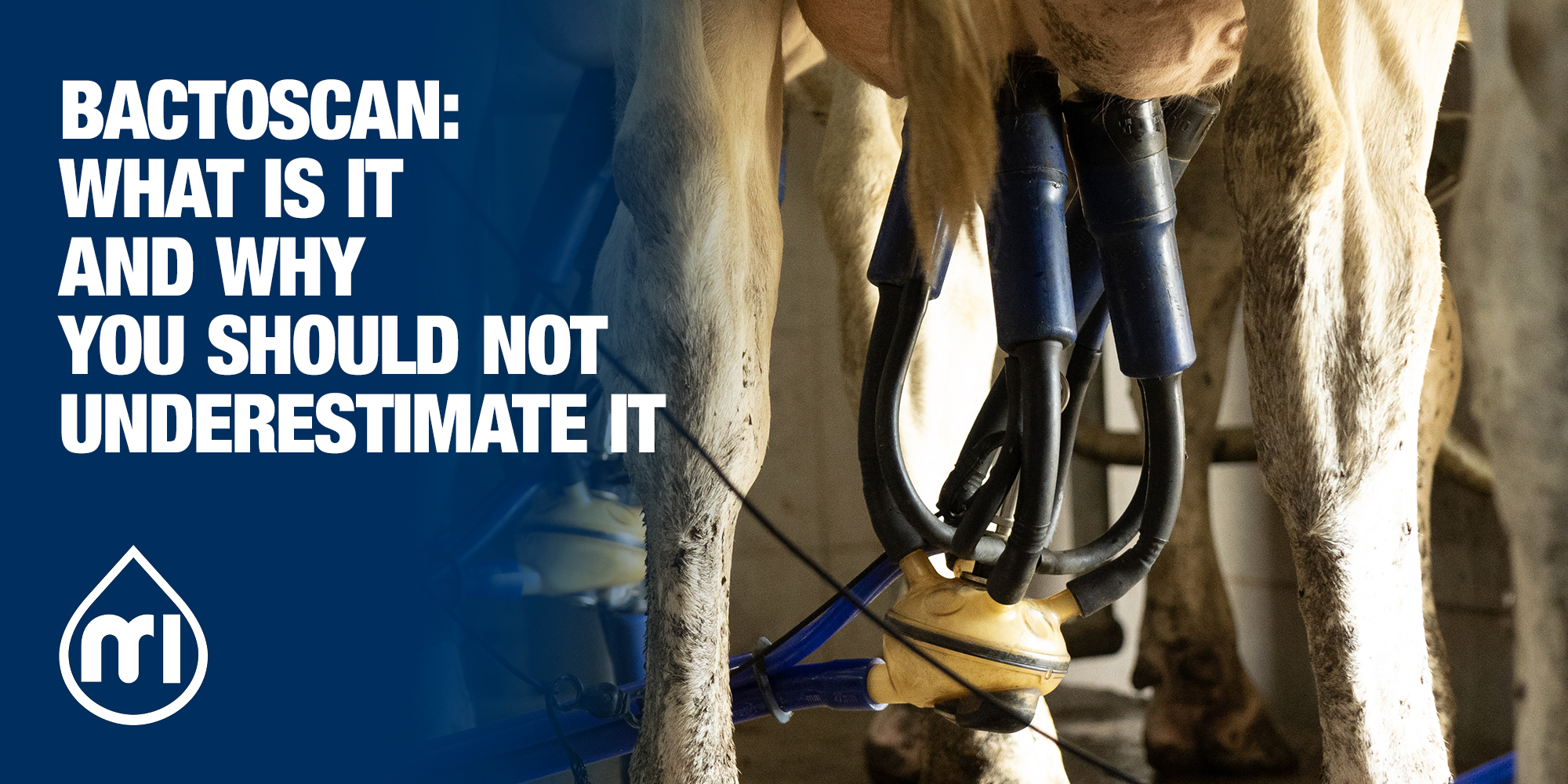
Bactoscan: what is it, and why you should not underestimate it
Let’s talk about this important indicator, revealing the hygiene and quality of your milk.
Milk is a precious source of nutrition for humans and animals. But germs can develop with temperature during processing. At 35°C, bacteria in milk can double within half an hour, whilst below 5°C they remain dormant.
So, is it possible to monitor the number of bacteria in milk?
Yes, it is. The quantity of bacteria per milliliter of milk is evaluated with the Bactoscan or Total Bacteria Count, an automated process that provides a valuable indicator of milk hygiene and quality in only 7 minutes. Through centrifugation, the main body is separated from bacteria which are then counted.
The Bactoscan is expressed in units, so 1 means 1000 bacteria/mL.
Parameters were set up to define the standards for milk quality. The EU set a maximum of 100 units as a legal requirement for the milk to be suitable for human consumption. However, to ensure the highest milk quality and avoid mastitis, Bactoscan should ideally be maintained below 30 units, as the National Animal Disease Information Service reminds.
But what happens if the Bactoscan is too elevated?
As we mentioned before, the Total Bacteria Count demonstrates milk hygiene. For this reason, the higher the Bactoscan, the shorter the shelf life of the milk, and the lower its manufacturing properties and the quality of the dairy products made with it. As a consequence, the price will decrease, while the risk of penalties grows.
What causes high Bactoscan in milk?
The main cause of a high Total Bacteria Count is contamination, and the main factors are:
Poor cleaning routine. When the parlour is not washed properly, residues can facilitate bacteria colonization, which affects the extracted milk. This means that Bactoscan also reveals the level of hygiene in the parlour and how well it is cleaned.
Poor milk refrigeration. If pre-cooling does not ensure a milk temperature of 7°C, bacteria naturally present in the milk before the extraction will quickly multiply.
Clinical or subclinical mastitis. When cows have healthy udders, the milk they produce contains very few bacteria. On the other hand, if some animals suffer from mammary gland infection, the Total Bacteria Count increases.
Teat contamination from the external environment. On one hand, an eye should be kept on the quality of rubber and plastic parts in the equipment, as well as on the liners’ life span and their cleanliness. On the other hand, other sources of bacteria are mud, manure and milkers’ hands. All these factors can be even more dangerous if combined with poor parlour hygiene or milking cows with wet or dirty teats.
Investigation: your ally in tackling high Bactoscan
When high Bactoscan is recorded in a parlour, these three areas would be the starting point for the investigation.
Record analysis. A mastitis case that hasn’t been detected can be the first cause of fluctuation trends in the available Bactoscan records.
However, another factor could be the environment, especially when fluctuations follow a seasonal pattern.
Lastly, a recent but consistent increase in the Total Bacteria Count might reveal an issue with the cooling system or in the washing routine.
Parlour routine, where frequent red flags are:
Washing the udder and setting up the cluster before being wiped and dry, facilitating bacteria spreading.
Removing the pre-milking disinfectant before the recommended time, which is at least 30 seconds.
Using ineffective products or combining alkalic and acid products.
Using disinfection only during the housing period.
Plant cleanliness and washing routine. Where the most common mistakes are:
Not using appropriate detergent or enough water.
Carrying out too short or incomplete circulation time.
Wet bedding.
Bulk Milk Bacteriology, making sure to take the samples from the bulk tank after milk has been agitated at least for a minute and using a sterile sample bottle.
This test can help identify the source of the problem by looking at the levels of various kinds of bacteria in milk, as the table below displays.
Figure 1- Source: Gloucester Laboratories, Wood Veterinary Group
At this point, we make clear once again how important preserving milk integrity and quality is to maximise your profits. To do this, Bactoscan can be a very helpful indicator of the efficiency of your herd and parlour management, which could reveal severe inconsistencies in your routine.
Crucial tactics to tackle high Bactoscan will be explained in the next episode, so make sure not to miss it!
Sources:
Bactoscan – Wikivet.net, 2011
Bactoscan issues in dairy farm – CID Lines
Mastitis Part 5 - Bactoscan Problem and Solutions – NADIS Animal Health Skills
Tackling High Bactoscans – Farm Advisory Council, 8/2019
